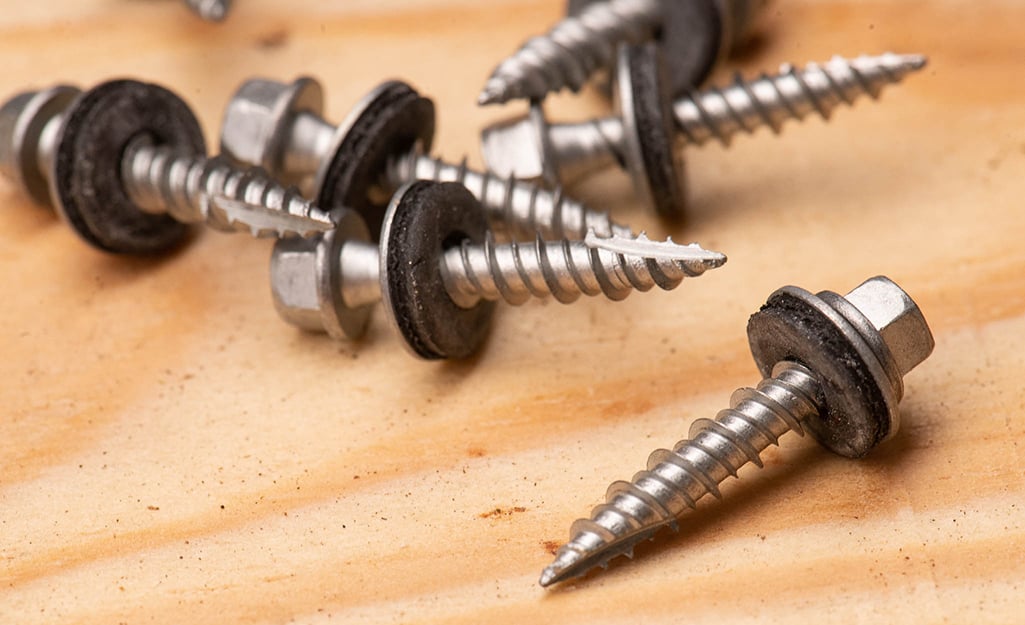Decking the Halls and Walls: The Best Screws, Bolts, and Nuts for Outdoor and Indoor Projects

Table of Contents
It’s that time of year again; the leaves are changing, pumpkin spice is everywhere, and stores have shifted from summer to holiday inventory. It’s an excellent time for craftsmen – or anyone with an itch for DIY projects – to get out their tools and start sprucing up their homes. Whether you’re building wall decorations inside your home or putting lights around the outside of it, having suitable screws, bolts, and nuts is essential for success.
In this article we will look at what should be considered when choosing hardware to ensure indoor and outdoor projects serve you throughout all seasons while looking great.
Choosing the Right Screws, Bolts, and Nuts for Your Project
When it comes to selecting the suitable screws, bolts, and nuts for your project, it’s essential to consider the materials you’ll be joining, the weight and stress load they’ll bear, and the conditions they’ll be exposed to. To ensure maximum safety and performance, choosing fasteners that meet the appropriate standards for the job is essential.
A bolt grade chart is one of the most valuable resources for determining bolt strength and suitability, which evaluates the physical, mechanical, and chemical properties of different bolt grades and alloys. By consulting these charts and selecting fasteners compatible with your materials and your project’s requirements, you can rest assured that your construction will be secure, efficient, and long-lasting.
Understanding the Difference Between Corrosion-Resistant and Non-Corrosion Resistant Metals
When working on outdoor projects, exposure to moisture and other elements can lead to corrosion over time. To prevent this, it’s important to choose either corrosion-resistant hardware or made of a non-corrosion resistant metal that has been treated with a protective coating, such as zinc plating or galvanization. These coatings create a barrier between the metal and its environment, preventing corrosion and extending the life of your project.
It’s important to note that not all metals are created equal in terms of corrosion resistance. Stainless steel is often the go-to choice for outdoor projects due to its high resistance to rust and other forms of corrosion. However, it’s also typically more expensive than other options, such as galvanized steel or aluminum. Ultimately, the choice will depend on your specific project needs and budget.
The Benefits of Using Galvanized Steel Hardware
Galvanized steel is the process of coating steel with a layer of zinc to protect it from corrosion. It is ideal for outdoor projects exposed to harsh weather conditions or high moisture levels. Additionally, galvanized steel is typically more affordable than other corrosion-resistant materials and can provide a firmer grip as the zinc coating creates a rougher surface.
Some other benefits of using galvanized steel include its durability, as the zinc coating can add an extra layer of protection against scratches and wear. It also requires minimal maintenance, making it popular for long-term projects such as outdoor decks or fences. However, it’s important to note that over time, the zinc coating may begin to wear off and expose the underlying steel, so regular inspections and maintenance are still necessary.
Tips for Installing Decking Screws, Bolts, and Nuts
Installing decking screws, bolts, and nuts can be a daunting task for many homeowners. However, this process can be smoothly executed with proper preparation and technique. Before beginning, ensure you have all the materials and tools required for your project. It is essential to choose the correct screws, bolts, and nuts for your specific application, as using the wrong materials can result in instability and damage to your deck.
When installing, ensure that screws and bolts are driven straight and perpendicular to the deck surface and tightened securely with the appropriate tools. With these tips, you can confidently tackle your decking project quickly and accurately.
Things to Consider When Buying Hardware
When purchasing hardware for your project, it’s crucial to consider your home’s overall aesthetic and design. For indoor projects, you’ll want to carefully select screws, bolts, and nuts that not only serve the functional purpose but also match or complement the existing decor. This attention to detail ensures a harmonious and cohesive look throughout your living space.
For outdoor projects, in addition to choosing materials that are durable and suitable for the environment and weather conditions, it’s worth contemplating the color and finish of the hardware. By doing so, you can effortlessly integrate your outdoor space with the overall design theme of your home, creating a seamless transition between the indoors and outdoors. This meticulous consideration adds an extra layer of sophistication and visual appeal to your outdoor areas, enhancing your residence’s overall charm and beauty.
How To Use Anchors For Outdoor Projects
When it comes to outdoor projects, using anchors can provide additional stability and support to your structure. Anchors are typically used for securing objects into concrete or masonry surfaces such as walls, sidewalks, or patios. They come in various types and sizes, each designed for different purposes.
Before purchasing anchors for your project, it’s essential to understand your structure’s weight and load-bearing capacity and choose anchors that can handle the required weight. Additionally, ensure that you properly install anchors according to manufacturer instructions for maximum effectiveness. With careful consideration and proper installation, anchors can significantly enhance the strength and durability of your outdoor projects.






